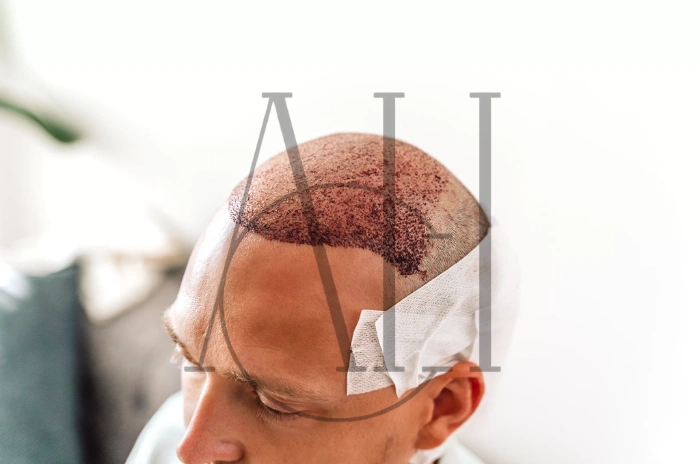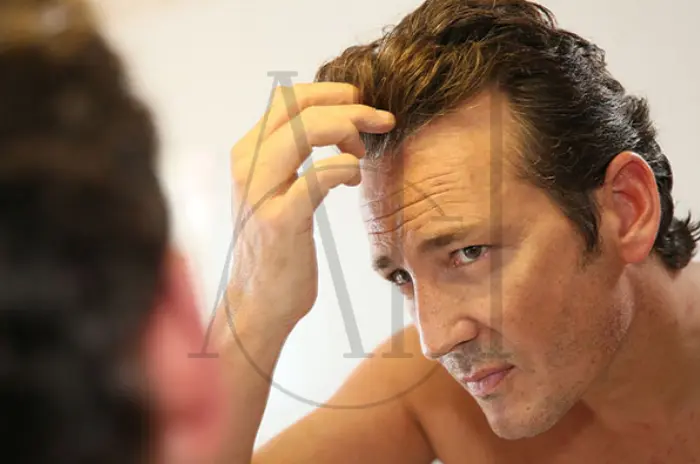Hair loss is a common concern for millions of people around the world. As demand for hair restoration continues to grow, so do the advancements in hair transplant technology. Today, techniques are more effective, precise, and less invasive than ever. In this guide, we will explore the latest innovations in hair transplant technology, how far the field has come, and what the future holds for those seeking a permanent solution to hair loss. If you’re considering a hair transplant, understanding new methods can help you make the best decision for long-term success.
Table of Contents
ToggleTechnology and Hair Transplants: The Evolution of Hair Restoration
From Basic Grafts to Precision Tools
Hair transplant surgery has changed dramatically over the years. What once required large grafts and left visible scars has evolved into minimally invasive procedures with natural-looking results. The use of technology has helped improve both graft survival rates and healing times, while also reducing patient discomfort. These innovations make it easier for patients to achieve a full head of hair with improved aesthetics and fewer complications.
The Early Days of Hair Transplants
1950s to 1980s
The first hair transplants used large plugs of hair. These plugs looked unnatural and often left noticeable gaps. Healing was slow, and scarring was common. Techniques like punch grafting were standard at the time, offering very basic outcomes compared to today’s advanced procedures.
Limited Success
Back then, the results varied greatly. Many patients were not happy with the outcome. The lack of precision tools made it hard to create natural-looking hairlines. This led to the demand for better, more reliable hair restoration solutions.
The Evolution of Techniques
FUT and FUE
As the years passed, doctors developed better methods. FUT (Follicular Unit Transplantation) became popular in the 1990s. Then came FUE (Follicular Unit Extraction), which allowed individual follicles to be transplanted with minimal scarring. Both methods marked a major improvement in patient comfort and visual results.
Growing Popularity
These techniques quickly became the gold standard. FUE especially gained attention due to its fast healing and less visible scarring. Today, it remains a top choice for those seeking minimally invasive procedures with excellent cosmetic outcomes.
The NeoGraft Procedure
What is NeoGraft?
NeoGraft is an automated FUE system. It improves accuracy and reduces the time needed for graft extraction. With this device, surgeons can perform transplants faster and with more consistency, helping patients achieve natural results in less time.
Benefits
-
Less trauma to the scalp
-
Faster procedure
-
Higher success rate of graft survival
-
Consistent results across larger areas NeoGraft is especially helpful in high-volume procedures where speed and precision matter.
Albania Hair Clinic – Trapianto Capelli in Albania (@albaniahairclinic)’in paylaştığı bir gönderi
The Future of Hair Transplantation
Personalized and High-Tech
The future of hair transplants includes custom treatment plans, AI assistance, and stem cell therapy. Technology is making it easier to plan procedures based on each patient’s hair type, loss pattern, and goals. These innovations are leading to safer procedures and more predictable outcomes.
Hybrid Techniques
Clinics now combine methods like FUE and DHI for better results. This custom approach will likely be the norm moving forward. Personalized procedures help optimize density and placement for natural-looking hairlines.
Latest Hair Transplant Technology
Innovations Making a Difference
New tools and machines are being used to assist surgeons during the procedure. Robotic arms, advanced implanter pens, and laser-guided systems are becoming more common in leading clinics. These technologies enhance precision and reduce human error, ensuring better graft placement and faster healing.
What is Robotic Follicular Unit Extraction?
ARTAS and Similar Systems
Robotic FUE uses a robot (like the ARTAS system) to extract hair follicles. It maps out the scalp and removes grafts with high precision. This improves both speed and accuracy, allowing for optimal graft selection.
Key Benefits
-
Faster extraction
-
Consistent quality
-
Less human error
-
Enhanced accuracy for difficult areas Robotic systems allow doctors to work with better efficiency and consistency.
Novel Micro-Graft FUE
Smaller and More Precise
Micro-grafting uses ultra-small grafts for more natural-looking results. The grafts are usually 0.6–0.8 mm in size, compared to larger ones in standard FUE. This helps achieve seamless blending with existing hair.
Better for Hairlines
This method is ideal for delicate areas like the front hairline and temples. It offers higher density and seamless blending, creating a very natural look in high-visibility areas.
Latest Advances in Hair Transplant Technology
Real-Time Imaging and AI
AI is now used to analyze scalp images and calculate the best angles and positions for implantation. This improves overall success and reduces human error. Real-time feedback ensures that each graft is placed exactly where it needs to go.
Smart Tools
Smart implanters can track pressure and depth during surgery, helping surgeons work more efficiently and safely. These tools provide better control and allow for even distribution of grafts.
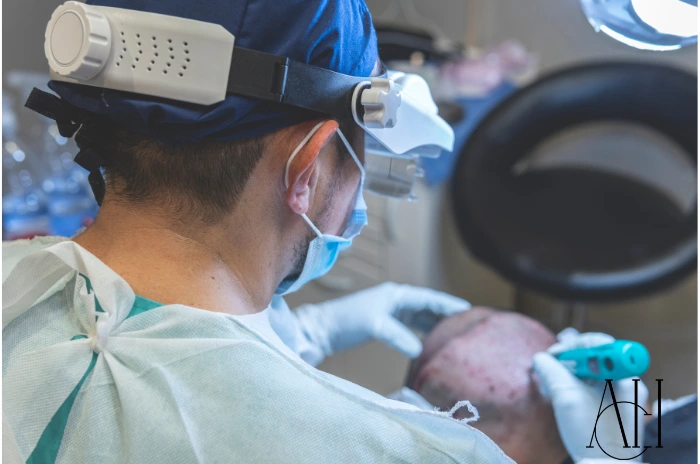
Benefits of the Latest Technologies
More Natural Results
Modern technology allows for better control over graft angle, density, and placement. This leads to a more natural hairline and appearance. Patients report increased satisfaction with the visual results.
Less Downtime
Advanced equipment and tools reduce trauma to the scalp. Most patients return to normal activities within a few days. This makes modern hair transplant options more appealing for people with busy lifestyles.
How Effective is Stem Cell Hair Transplant?
A New Frontier
Stem cell therapy is still in early stages but shows promise. Instead of moving hair, it helps stimulate the scalp to grow new hair. This regenerative approach may change the future of non-surgical hair restoration.
Research Continues
Some Hair Transplant clinics offer stem cell hair restoration as a treatment to slow hair loss and promote growth. Results vary, and more studies are needed to confirm long-term benefits.
Latest FUE Technology for Healthy and Fuller Hair Restoration
Upgraded Devices
Modern FUE machines use fine punches and gentle suction to collect grafts. This helps protect the follicle and improve its survival during implantation. Higher graft survival leads to denser and healthier results.
Better Experience
Patients now report less pain, quicker healing, and fuller results thanks to these FUE technology upgrades. Clinics that adopt these new tools are often preferred for their improved success rates.
Advantages of FUE Over Traditional Hair Transplant Surgeries
Less Invasive
FUE requires no stitches and leaves almost no scarring. Patients often prefer it for the minimal recovery time and natural outcome. The procedure is also more comfortable and convenient.
Versatility
FUE can be used on the scalp, beard, eyebrows, and even chest hair. It’s flexible and works well for both men and women seeking targeted restoration.
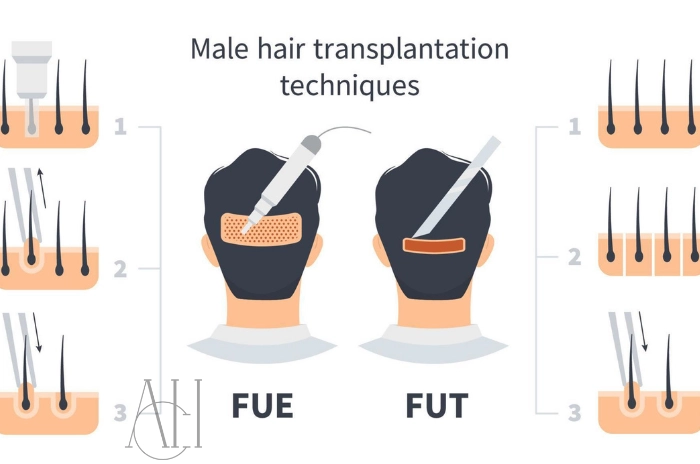
Types of Robotic Hair Transplant Surgery
ARTAS and SmartGraft
Two popular systems are ARTAS and SmartGraft. These robotic systems use cameras, AI, and robotic arms to perform FUE with speed and precision. Clinics that use these systems can offer shorter procedures with more consistent results.
Features
-
Real-time feedback
-
Reduced fatigue for surgeons
-
Improved accuracy Robotic hair transplants are ideal for patients looking for high precision and safety.
Robotic FUE Hair Transplant Cost
Investment in Precision
Robotic FUE is more expensive than manual FUE due to the technology involved. Costs can range from $5,000 to $15,000 depending on graft count and clinic reputation.
Worth the Price?
While the cost is higher, many patients find the speed and accuracy worth the investment. It’s especially beneficial for those with limited time and high expectations.
Advantages of Robotic Hair Transplantation
Time-Saving
Robotic procedures can extract hundreds of grafts per hour with consistent quality. This reduces surgery time and fatigue for both patient and doctor.
High Graft Survival
Robots reduce damage during extraction, which increases the chances of successful graft growth. Patients benefit from improved long-term results.
Advantages of Robotic Technology in Speed and Precision
More Consistent Results
Robots can work longer hours without fatigue. This leads to better consistency across the entire treated area, especially during large sessions.
Less Stress on Patients
Faster procedures mean less time in the chair, which improves the overall experience. It also reduces post-op swelling and discomfort.
Advantages of Advanced DHI Pens
Precision Placement
DHI pens allow direct implantation of follicles without the need to create channels first. This saves time and improves control, especially in dense or sensitive areas.
Less Bleeding
With DHI pens, bleeding is reduced because the process is more controlled and gentle. Patients experience faster healing with fewer complications.
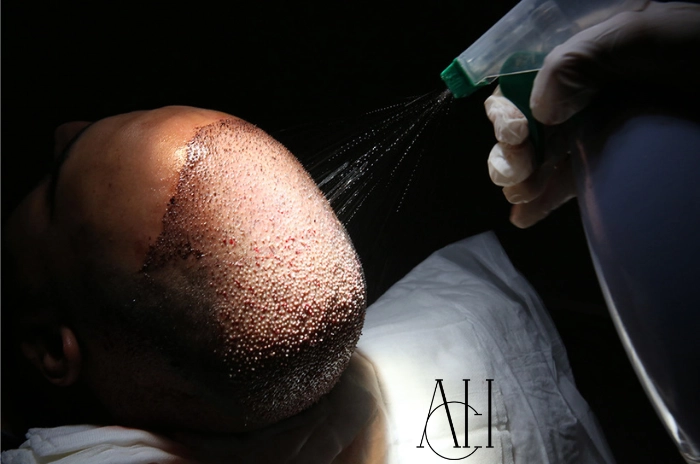
Laser-Assisted Hair Transplant Techniques
Using Light to Help Healing
Some clinics now use low-level laser therapy (LLLT) after transplants. This improves blood flow and reduces inflammation, promoting faster recovery.
Faster Recovery
Laser treatments can speed up healing and make the scalp feel more comfortable in the early recovery phase. Many patients also report stronger early hair growth.
Impact of AI-Assisted Analyses on Success Rates
Smart Planning
AI helps doctors plan treatments more effectively. It can calculate graft angles, densities, and scalp conditions using photos and scans. This ensures greater precision and optimized planning.
Higher Success Rates
AI reduces human error and increases precision, which leads to better hair growth and higher patient satisfaction. Clinics using AI often report improved transplant success.
Next-Generation Equipment Used in Hair Transplantation
State-of-the-Art Tools
From robotic arms to high-resolution imaging tools, modern clinics now use cutting-edge technology that improves accuracy and speed. These devices improve both surgical outcomes and patient comfort.
Better Patient Outcomes
These tools help reduce surgery time and increase comfort, making hair transplant procedures easier for both patient and surgeon. They also support better graft survival and long-term growth.
Contributions of Genetic Research to Hair Transplant Technology
DNA and Hair Loss
Genetic research helps identify the root causes of hair loss. This can help create personalized treatment plans based on a person’s unique genes. Understanding genetics can guide early intervention and improve transplant timing.
Targeted Solutions
By understanding how different genes affect hair growth, doctors can choose the best technique and treatment for each patient. Personalized plans lead to higher success and patient satisfaction.

The world of hair transplantation has advanced rapidly thanks to new technology. From robotic systems and AI to stem cell therapy and laser treatments, patients today have more choices than ever. Whether you are looking for a fast recovery, natural results, or the latest innovation, modern hair transplant technology offers something for everyone. Speak with a specialist to explore the best solution for your hair restoration journey. Making an informed choice ensures better outcomes and long-lasting confidence.
Frequently Asked Questions
What are the latest technologies in hair transplant surgery?
The newest technologies include robotic FUE systems, AI-assisted planning, DHI pens, NeoGraft automation, and stem cell therapies, all designed to improve precision and healing.
Is robotic hair transplant better than manual methods?
Yes, robotic systems like ARTAS offer faster, more accurate graft extraction with less human error, but both methods can give great results depending on the surgeon’s skill.
What is the difference between FUE and NeoGraft?
FUE is a manual technique, while NeoGraft is an automated version of FUE. NeoGraft uses a device to extract and implant follicles faster and with more uniformity.
Are new hair transplant techniques less painful?
Yes, modern tools like DHI pens and robotic systems make the procedure more comfortable. Recovery is also quicker thanks to less trauma to the scalp.
How do AI and technology improve hair transplant results?
AI helps with scalp mapping, graft planning, and placement accuracy, which increases success rates and gives more natural, even-looking hair growth.



